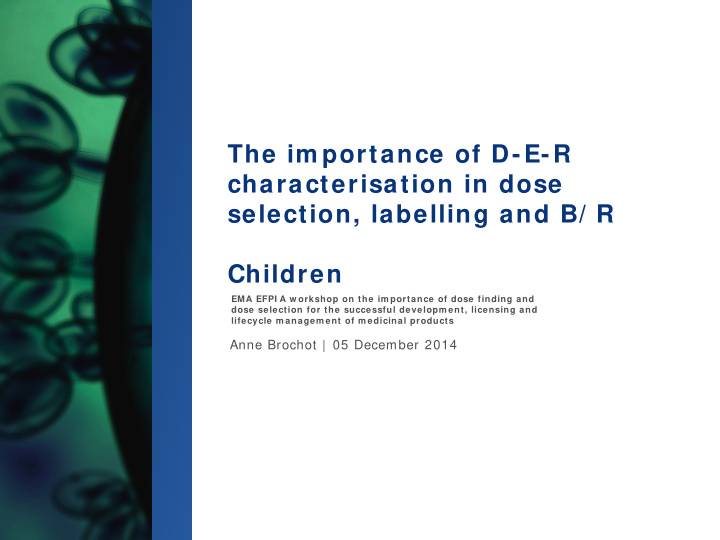



The im portance of D-E-R characterisation in dose selection, labelling and B/ R Children EMA EFPI A w orkshop on the im portance of dose finding and dose selection for the successful developm ent, licensing and lifecycle m anagem ent of m edicinal products Anne Brochot | 05 December 2014
Pediatric study decision tree Manolis et al. 2011 2
Pre-requisite Knowledge of the D-E-R in adults – Might not be well understood at the time of the PIP development – Case of pediatric specific drugs 3
Maxim ising the D-E-R know ledge Use of all available knowledge – What should be included for extrapolation Same class of drug – Possibility to share models and go for simpler study Use of pre-clinical models – How much weighting ? Flat D-E-R 4
Facing the reality of enrollem ent difficulty ( 1 / 2 ) Standard study design for all countries How regulators can support industry in recruitment difficulty Guidance on the number of subject – is Wang et al. paper enough ? – how much safety is needed ? Integrated Ph I-II-III study (study combining PK and safety) 5
Facing the reality of enrollem ent difficulty ( 2 / 2 ) Acceptance of innovative design based on M&S, adaptive design using: – Efficacy – Safety – Pharmacokinetics Is a full D-E-R characterisation needed ? Group specifities – Are adolescents part of pediatric population Conduct an open-label safety study in a pediatric population* – DB is cleanest to show efficacy and safety – Not many subjects to enroll – How ethical is to expose limited population to placebo – Increases safety database – Virtual comparison (simulations) of drug and placebo (disease progression model) as in DB study Berde CB et al. 2012 6
Open questions How can we ensure that we don’t miss the opportunity to make the adult development data also useful for paediatric development ? How to ensure a state of the art paediatric development ? - In phase with recruitment reality How do we best support the generation of system data ? 7
Recommend
More recommend